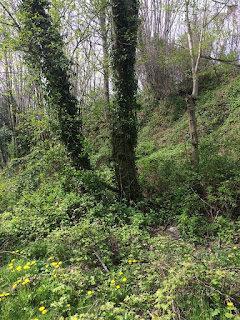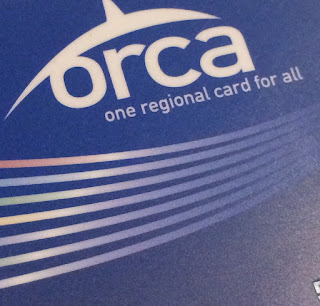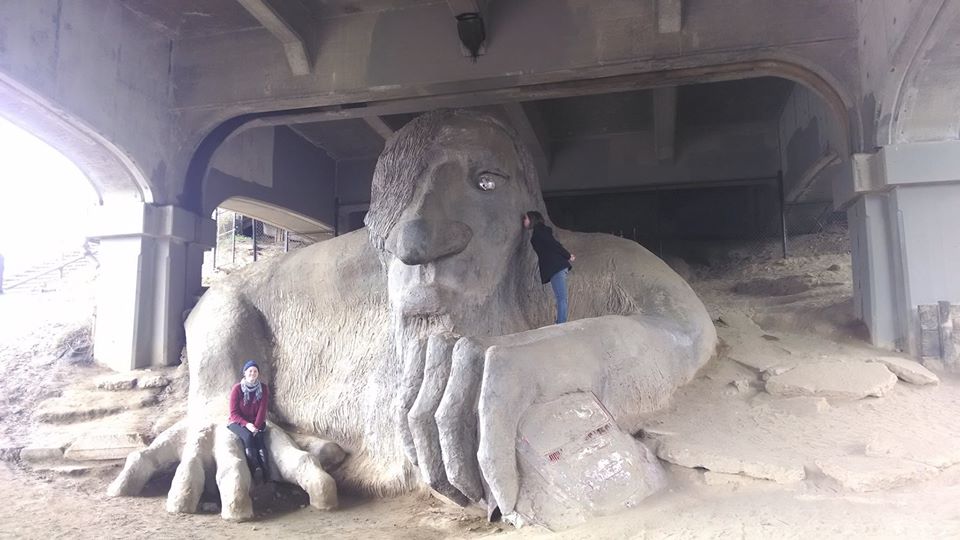I recently made the big decision to pack my bags and move from the Midwest to Seattle, Washington. Me and the rest of my generation. It’s been about two months since I’ve settled in and I’ve started to pick up on some of the major environmental differences that drew me to this city in the first place.
That said, Seattle isn’t perfect, no matter how tinted my rose colored glasses are. While many of the steps they’re taking are in the right direction, there’s only so much a city government can do to enact change.
The give and take between government and individuals can feel like a Catch-22. It’s difficult for any individual to make waste-reducing changes in their life when certain institutional supports aren’t in place, but it’s difficult for governments to create waste-reducing systems without treading on people’s right to choose.
I just so happened to find a city whose goals match mine.
They compost for you
As I explained in a previous blog, composting can be the hardest part of zero waste if you don’t have room for your own composting system or you just don’t know what you’re doing (Note: A few weeks after writing that blog I killed all my worms by overfeeding them). In Seattle, they have industrial composting facilities and provide residents with a “Food and Yard Waste” bin in addition to their garbage and recycling bins. I’ve heard many rumors as to what the official laws are around homes and apartments, but as far as I can tell, the only requirements are that you separate your trash into compostables, recyclables, and landfill waste. A lot of residences (including my own home, where at least 5 people are living at any given time) don’t even need a large trash can if they don’t have to throw out their food waste or recyclables.
As a result, you can see businesses reflecting their demographic. Restaurants and cafes where you clear your own table have 3 part receptacles for your compost, recycling, and landfill waste. Even walking into a national retail chain, the first things on the shelves are compost bins and other food-saving equipment.
At some point, I’d like to take a tour of Seattle’s recycling and composting facilities, but that’s a blog for another time.
You have to pay for bags
Cashier training at a Seattle Bed Bath & Beyond revealed one peculiarity: Within city limits, you have to pay 5 cents for a bag. This goes for all stores, not just where you buy your groceries. The goal? Asking to pay a nickel for a bag does, at the very least, make you think, “Do I really need a bag for this?” People will either value the bag more by paying for it or they bring their own/go without because they don’t think it’s worth a nickel.
A lot of people think that reusable bags are for groceries only, and don’t consider bringing them to retail establishments. I remember at the late Hancock Fabrics, I would ask customers if they wanted a bag just in case they had one in their purse or car that they’d forgotten about. Most customers would look at me like I was crazy. But they were the ones putting two spools of thread in a 24 oz plastic bag that they’d probably only use once, maybe twice.
I honestly believe negative reinforcement was what got me to bring my own bags wherever I went shopping. I decided if I forgot them, I’d just have to go without. Precariously balancing your belongings on the way to your car or putting everything in a hoodie and wrapping it up like a cartoon burglar gets old fast.
Cons: As I’ve stated before, living zero waste is a privilege. When you’re counting pennies to pay for your supper, you may not have the money to spend on a bag even if you really need it, far less “invest” in a reusable bag. This, coupled with Seattle’s huge homeless problem, makes me uneasy when it comes to laws that restrict low income people’s health and happiness.
You’ve probably experienced a time in your life when spending under
your cash limit is cause for celebration.
I would much rather there be more programs that support the zero waste market in a low-income-friendly way. I’m just spit balling here, but:
- A pay-it-forward option for purchasing bags, kind of like take-a-penny, leave-a-penny. Some people hate loose change.
- Reusable bag donation sites: A lot of middle class people get reusable bags as free convention hand outs, gift bags, and more. Then when they get stained, faded, or torn, they just throw them out. Or they never use them at all and they’re jammed in the bottom of a junk drawer. If there was a more specialized drop site at local stores, it would be easier for people to have access to reusable bags, regardless of their socio-economic class.
- Classes for re-purposing old clothing into bags: Repair cafes are cropping up all over the world (though none, as of yet, in Seattle proper). If these cafes had specific calls for sewing lessons centered around usable crafts, more people may be more willing to re-purpose old ugly t-shirts into bags.
There are obvious flaws with each of these plans, but I believe lots of little solutions are the key to one big solution: reducing our carbon footprint.
Stuff grows everywhere
If you remember your fourth grade science lesson, photosynthesis is a process that turns carbon dioxide into oxygen. Plants are just straight up good for reducing waste. And Seattle has them in spades. While this is partially due to the area’s perfect climate (lots of rain, no winter frosts, and mild temperatures), I also think the government and residents alike take an active part in promoting natural growth in the city.
- Nature reserves and “Greenspace”: There are a lot of parks big and small and protected wild lands in Seattle.
- Rooftop gardens: A trip to the Space Needle or the top of the Seattle Public Library will reveal just how many apartment complexes and other skyscrapers strive to provide green space on their roofs and in their windows.
- Miscellaneous growth: Stuff grows on buildings, highway medians, street lamps. Everything the rainfall touches. While other cities can’t necessarily copy a climate, I couldn’t help but mention this perk to my new life.

I guess there is one downside, albeit a sort of selfish one. Now that it’s summer, plants are taking over the city like the Legend of Korra spirit world style. I can barely walk on some of the sidewalks because of overgrown weeds. It occasionally pushes me into the bike lanes, which isn’t the safest of avenues. It’s almost to the point that I want to complain to someone, but I have no idea who to complain to.
Regardless, I still say in general the air is cleaner, the sites are more beautiful, and you feel less trapped in an urban cage while you’re here.
Most streets have sidewalks, many have bike lanes
Is it really necessary for me to explain why cars are wasteful? I would say no, but I still get weird looks from co-workers when I say I walk to work. I still have to explain that walking is:
- Healthy (mentally and physically)
- Good for the environment
- Free
Mostly, I’m still psyched to have the option of walking safely to get to my destination. I’ve lived in towns and cities where sidewalks are rare and bicycle lanes are unheard of. Here, I rarely come across a busy street without a sidewalk and usually see bike lanes on these as well. With the exception of a few residential streets, I can walk free from the fear of getting hit by a car.
So after driving my car over 2100 miles to get here, I decided to take a hiatus from automobiles. I didn’t drive my car for the first two months here, relying on walking and the bus. I got a job within walking distance and my new home is right next to three major bus lines that go around my neighborhood or into downtown. I haven’t biked here yet, but if you saw the hills you wouldn’t blame me.
I do admit I have a lot of luxuries that others may not: I have no dependents, so there’s no rush to go home and get dinner on the table. I’m only working part-time right now, so I have more hours in the day to get where I need to go. Lastly, I don’t know many people in the city, so there are no obligations to make it to social events. Basically, I can take my sweet sweet time.
For a growing city, the public transport is decent
I never tried to figure out public transportation in my home town. Buses came about once every half an hour to an hour and the lines never went where I needed to go. I used the metro half a dozen times, and only when I happened to live down the street from a stop (a rare occurrence for most neighborhoods). In Seattle, on the other hand, you can get anywhere by bus with $2.75, a book, and enough time.

The buses aren’t perfect (rush hour is insane no matter what transportation you’re using) and the link only has one line, but here’s what I think Seattle is doing right:
- Bus lanes: Like bike lanes, buses are sometimes given special access on busy roads and highways. This system helps them stay on time.
- Companies can sponsor their employees: To encourage public transportation, Seattle allows colleges companies to pay for their employee’s Orca cards. This means free transportation for people who work downtown or in busier areas, which means less traffic and lighter population density in highly commercial or collegiate areas.
- Free transfers: You can change buses as many times as you like for up to 2 hours after your first charge.
I hope Seattle keeps moving forward
Change is the only constant, as they say and Seattle is in the midst of major growing pains. There’s a chance that the huge influx of people will dilute the city’s eco-friendly momentum or even cause some major cultural reversal. Cost of living is pushing arty hippie types like me out to make room for guys with deeper pockets.
But hopefully not. For the time being, Seattle continues to be an example of what is possible for growing cities in the ways of eco-conscious living. And I intend to ride the wave.

Informative article, just what I was looking for.